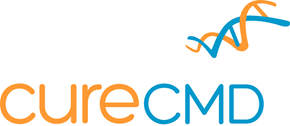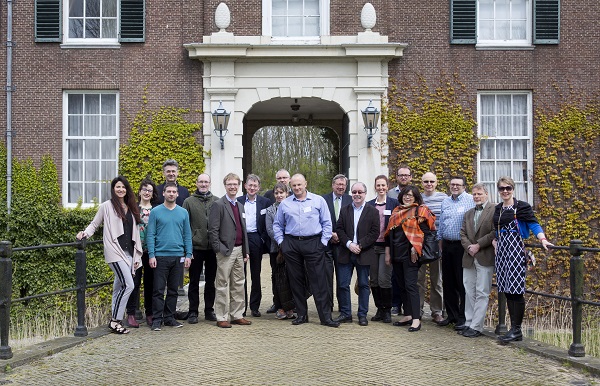Titinopathies – International database of TTN mutations and phenotypes
- Number 219
- Date 29 April 2016
Location: Heemskerk, The Netherlands
This workshop was co-supported by The Joshua Frase Foundation and Cure CMD


Organizers:
Peter Hackman, Folkhälsan Institute of Genetics, University of Helsinki (Finland)
Bjarne Udd, Neuromuscular Research Center, Tampere University (Finland)
Carsten Bönnemann, NINDS/NIH (USA)
Ana Ferreiro, Unité de Biologie Fonctionnelle et Adaptative, Université Paris Diderot (France)
The goal and purpose of this ENMC workshop was to establish an international database of TTN (Titin gene) mutations, variations and their clinical presentations, to be able to determine if particular genetic variants of the gene are the cause of disease. Titin is a giant protein, that functions as a molecular spring responsible for the structural integrity and passive elasticity of the muscle. TTN mutations have to date been reported to be the cause of various diseases collectively termed titinopathies, including a range of skeletal muscle and cardiac diseases.
We brought together worldwide leaders in the Titin myopathy field, Titin family advocates, as well as representatives from other successfully developed groups. Some attendees are already collaborating together to identify disease causing genes and their clinical descriptions.

Nederland, Heemskerk, 30 april 2016.
ENMC. Groepsfoto.
Foto: Jeroen Poortvliet.
Discussion
“Titin is complex and our need for answers is urgent.” said Titin patient representative Sarah Foye. After welcoming remarks by Prof. Bjarne Udd and the ENMC Managing Director, Foye opened the meeting by sharing several patient stories to convey patient perspectives.
The meeting then went on to discuss clinical presentations as well as genetic variations of cases from multiple clinicians and researchers. In the sharing spirit of the conference, people presented various cases that have not yet been published in the medical literature. There is a wide range of clinical symptoms that include things like muscle weakness, rigid spine, upper and lower body contractures (tight joints), breathing problems, heart disease and more. The age when symptoms start ranges from birth to adulthood. It became clear that the range of Titin symptoms is multifaceted and varied. Dr. Ana Ferreiro suggested using the term “congenital titinopathies” to describe the whole spectrum of infantile-onset muscle diseases, with or without heart involvement, associated with TTN mutations. Dr. Carsten Bonnemann commented that when diagnosing titinopathies clinicians need to consider genetic information (“genotype”), physical features (“phenotype”), microscopic lesions of the muscle cells (“histiotype”) and functional defects (“physiotype”).
The meeting covered different methods of making a genetic diagnosis. The tools for analysis of whether these variants are disease causing or not were reviewed. The group then assessed several databases in existence to see if they would meet the needs. Due to its large size and intricate nature, determining whether a TTN gene variant causes disease or not is a tough challenge. In addition, the current computer tools available are not adequate to meet this need. Thus, a Titin-specific database is necessary.
Specific database requirements were then discussed. The database needs to include the ability to make an accurate genetic diagnosis as well as to capture a good clinical picture of symptoms.
Outcomes:
- Attendees agreed that a Titin-specific database is needed.
- The group drafted clinical questions to include in the database.
- Platforms for housing the database were presented and discussed.
- Patient/family experiences were portrayed and appreciated.
- A collaborative spirit was strengthened among attendees.
- A commitment to move forward to making a difference for families with titinopathies was renewed.
- “Plan B” platform alternatives were mentioned in case the “RD-Connect platform” be deemed unsuitable.
Key deliverables and who is taking the lead:
- The clinical questions on PhenoTips were drafted for the database. Final touches to these questions will be made within 60 days. (Ferreiro, Saravese, Hackman, Udd)
- A pilot version of the database based on the RD-connect platform will be tested and data from 100 samples will be uploaded by June 30th 2016. (Saravese, Hackman, Udd, Evangelista)
- After the RD-Connect pilot has been evaluated an on-line meeting will be held in September to discuss the experiences and the execution of follow up actions. (All, Foye to organize online meeting logistics)
- If a decision is made based on the pilot study to use RD-connect, then the groups which attend the workshop will submit their data into the database. (All)
- A computer program for analyzing Titin variants currently named, “Titin Viewer” developed by Isabelle Richard, has been drafted and will be piloted by 30th June 2016. (Hackman, Udd, Saravese, Beggs and other interested parties)
Future meetings:
- Online meetings as needed to move the database forward.
- A new ENMC follow up workshop to decide further steps based on the experiences with the utility of the database will be applied for in one year, after the full report has been published in the journal of Neuromuscular Disorders. In this follow up workshop decisions on the wider access to submit data to the database, curation of data submitted from outside the consortium and integration of the cardiomyopathy part will be made.
- Participants in this workshop were: Bjarne Udd, Neuromuscular Research Center, Tampere University (Finland); Peter Hackman, Folkhälsan Research Center (Finland); Ana Ferreiro Unité de Biologie Fonctionnelle et Adaptative (France); Carsten Bonnemann, NIH/NINDS (USA); Alan Beggs, Boston Children’s Hospital/ Harvard Medical School (USA); Mathias Gautel, King's College London (UK); Mark Davis, PatheWest Laboratory (Australia); Teresinha Evangelista, Newcastle University (UK); Marco Savarese (via the ENMC Young Scientist Award), Folkhälsan Research Center (Finland); Jelena Nikodinovic Glumac, Clinic for Neurology and Psychiatry for Children and Youth (Serbia); Jocelyn Laporte, IGBMC (France); John Edward Smith, University of Arizona (USA); Isabelle Richard, Genethon (France); Henk Granzier, University of Arizona (USA); Raphäel Schneider, IGBMC (France); Heinz Jungbluth, King’s College (UK); Sarah Foye, Titin family representative, Congenital Muscle Disease International Registry (USA); Alison Rockett Frase, patient representative, Joshua Frase Foundation (USA).Thank you to the ENMC and our sponsors who helped fund with non-European travel expenses. A full report will be published in Neuromuscular Disorders.
A full report is published in Neuromuscular Disorders (pdf).
